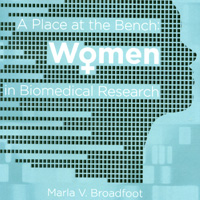
In 2009, the Burroughs Wellcome Fund commissioned a series of articles by science writer Marla Broadfoot to look at the landscape for women in the biomedical sciences. Broadfoot was given free range to explore the subject area, and the articles were published in the Fund’s FOCUS newsletter. The first article appeared in July 2009 and was circulated through social media. Given the popularity of the articles, it was decided to compile them in the hope that they would inspire more thought and discussion.
The Burroughs Wellcome Fund has long supported the careers of women scientists and continues to strive in its program areas to create a supportive environment.
We would appreciate any feedback. Please feel free to email news@bwfund.org
Author Preface
In many academic disciplines the numbers of women may be finally reaching those of men, but the ranks in science and engineering are still a long way from displaying gender equity. This disparity has implications not only in terms of social justice, but also for the quality of science pursued in this country.
Diane Halpern, one of the many researchers quoted in these pages, stressed that it is essential that people talk about the rhetoric of choice, recognizing that whether women choose to stay in science is shaped in many ways by the confines of the society in which we live. The contributions of women continue to be undervalued, by both men and women alike. And until there are some good institutional programs to keep women doing research at universities and institutes, flooding the pipeline at the front end will never be enough.
This series examines some of the unique challenges faced by women in science, such as lack of mentoring, the biological clock and unconscious institutional bias, and will explore possible solutions to retain more talent in this important field.
About the Author
Marla Vacek Broadfoot writes about various aspects of biomedical research, from gut bacteria to the circadian clock to fertility tests. Before becoming a writer she was a postdoctoral fellow at the National Human Genome Research Institute and was awarded board certification in clinical molecular genetics by the American College of Medical Genetics in 2005. Marla received her Ph.D. in genetics and molecular biology from the University of North Carolina at Chapel Hill in 2003.
When the Burroughs Wellcome Fund initially approached Marla to write about women in science, the intended focus was on how to persuade more girls to go into the field. But Marla’s feeling was that there was not a dearth of young women interested in and majoring in science, and she found plenty of data to back her up. She came to discover that the real issue often doesn’t emerge until subtle disadvantages begin to pile up, causing many women to reach a breaking point and leave the academic track altogether.
In Marla’s case, that “breaking point”—if there was one—came after continually being frustrated by the pace of research, in which the failure of an experiment seemed to be the norm rather than the exception.
She struggled to find role models who had it all—a successful career, a loving husband, a family. Even in her postdoc, her wonderful and brilliant female mentor (who had a husband and a family, check!) admitted to going back to work two weeks after the birth of her first child. In the end, Marla happily left research behind to have babies and pursue her passion for writing. She hopes that this series can help women whose passion lies in research to stick with the discipline, and to excel to its highest level.
To order print copies of this book please email your address to news@bwfund.org.

